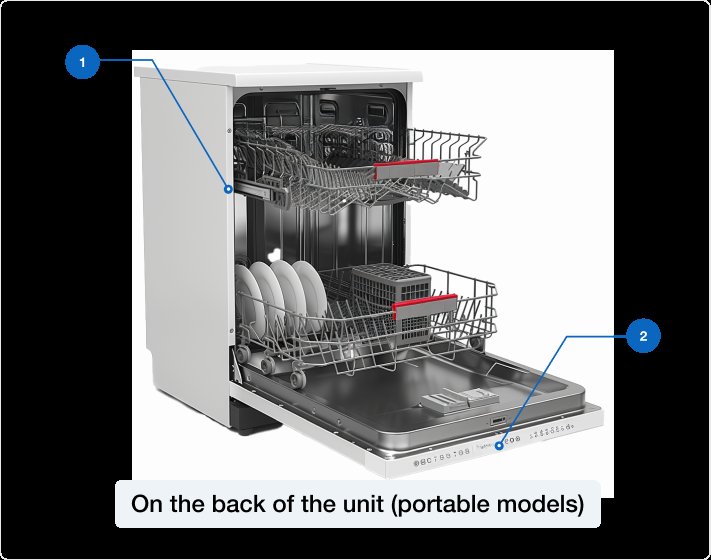
Error Code F1 might sound technical, but it’s essentially a diagnostic tool built right into your machine. It’s there to help identify issues that might be affecting your dishwasher’s performance. While it may seem like a foreign language at first, with a bit of guidance, you can become fluent in interpreting these codes. So, let’s dig into what this F1 error code really means and how you can troubleshoot it like a pro, even if you’ve never fixed a dishwasher before.
Understanding the Error Code F1
The F1 error code on a Kitchenaid dishwasher generally relates to a heating issue. You might be wondering, “Why does heating matter in a dishwasher?” Well, just like how a warm bath helps relax your muscles, warm water in a dishwasher helps to effectively break down tough stains and grease on your dishes. So, when there’s a problem with the heating element, your dishwasher may struggle to achieve those sparkly clean results you love.
When the F1 error pops up, your dishwasher is essentially saying, “Hey, I can’t heat the water properly!” This usually ties back to either the heating element or the temperature sensor (thermostat). These components are crucial, like the thermostat in your oven, ensuring everything is at the right temperature to get the job done.
If your dishwasher isn’t heating water as it should, not only does it affect cleaning, but it can also lead to improper drying of dishes. Imagine washing clothes without warm water; some stains might just not come out. So, tackling the F1 code promptly is key to getting your dishwasher back in top form.
Common Causes of Error Code F1
Now, let’s dive deeper into what could be causing this pesky F1 error. Generally, this error boils down to a few common culprits. First up, the heating element itself. Think of it like a kettle’s heating coil—if it’s faulty, the water won’t get hot enough. Over time, heating elements can wear out due to prolonged use, and when they do, they need replacement.
Another possible cause is an issue with the dishwasher’s thermostat. If the thermostat isn’t working, it’s like having a broken thermometer—it can’t accurately measure if the water’s hot enough. This can trick your dishwasher into thinking it’s heating the water when it’s actually not.
Lastly, the problem could be linked to the control board, which is the brain of your dishwasher. If it’s not sending the correct signals to the other components, the entire heating process may be interrupted. This is like having a conductor who’s lost their sheet music—without the right guidance, the performance suffers.
Troubleshooting the F1 Error Code
So, what do you do when faced with this error? First, ensure safety by unplugging the dishwasher or turning off the circuit breaker. Safety first, right? Then, start by inspecting the heating element for visible damage or wear. If it looks burnt or broken, it’s likely time for a replacement.
Next, check the thermostat for functionality. You might need a multimeter for this step—a handy tool that measures electrical resistance. If you’re not comfortable using one, or the numbers don’t seem right, calling in a professional might be the best route. Sometimes, replacing the thermostat is necessary to restore proper functionality.
If neither the heating element nor the thermostat appears to be the issue, it might be time to consider the control board. This can be a bit more complex since the control board involves intricate circuitry. We recommend professional assistance here, as replacing or repairing it requires expertise.
Preventing Future Error Codes
We’ve all heard the saying, “An ounce of prevention is worth a pound of cure.” This holds especially true for appliances like dishwashers. To minimize the chances of facing the F1 code or similar issues, make it a habit to run your dishwasher’s self-cleaning cycle. This helps prevent mineral buildup that can impact the heating element.
Also, opt for high-quality dishwasher detergents that are less likely to leave residues. Periodic checks of the heating element and thermostat can catch wear and tear early, much like routine car maintenance keeps your vehicle running smoothly.
Finally, keep your dishwasher’s manual handy—it’s a treasure trove of information about specific error codes and troubleshooting tips unique to your model. With these proactive steps, you can help ensure your Kitchenaid dishwasher runs smoothly for years to come.
And there you have it! When your trusty dishwasher sends out an F1 error code, you’re now equipped with the knowledge to handle it confidently. Remember, it’s all about understanding what your appliance is trying to tell you, so you can keep enjoying those spotless dishes without a hitch.